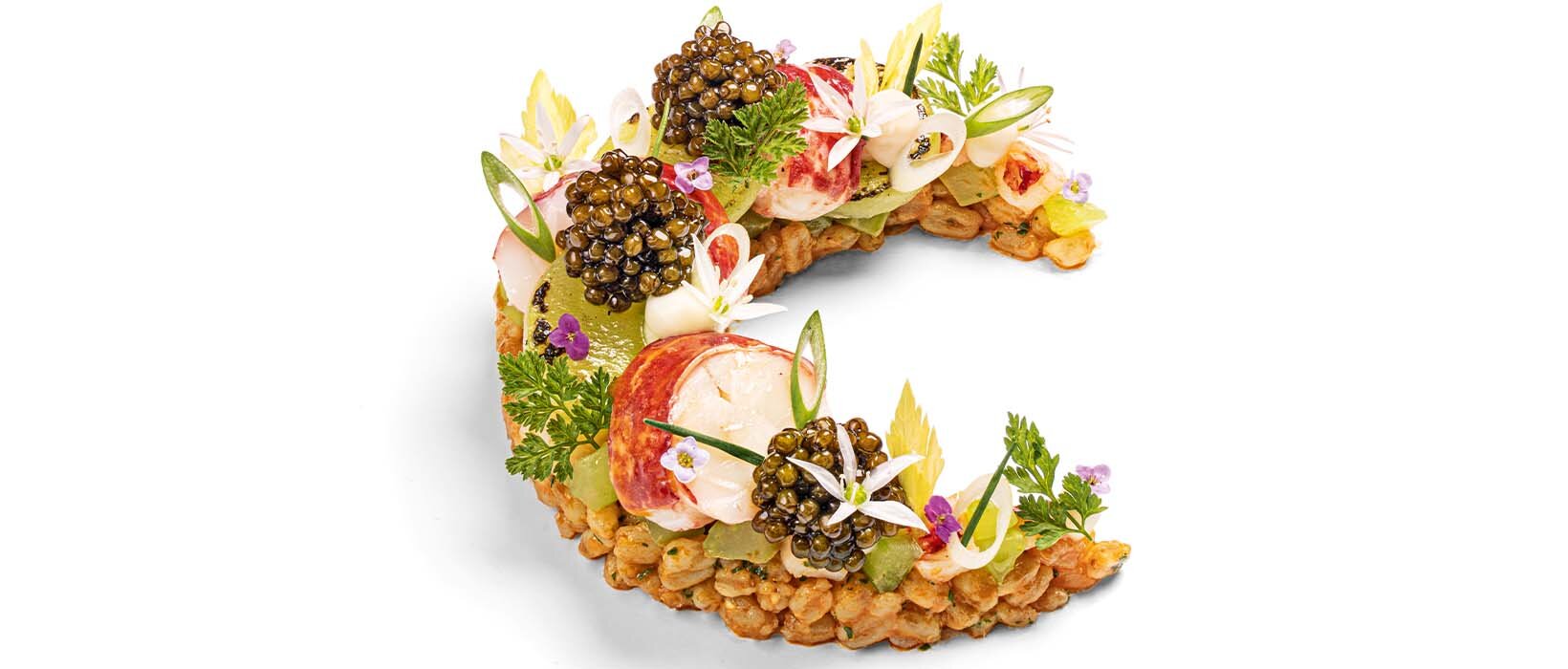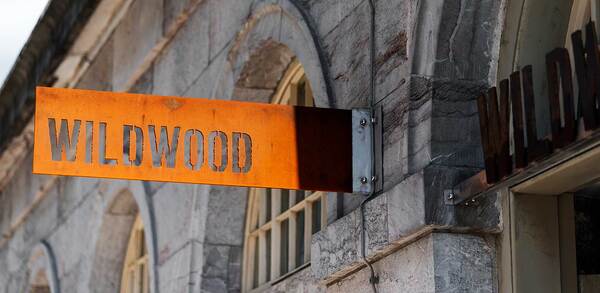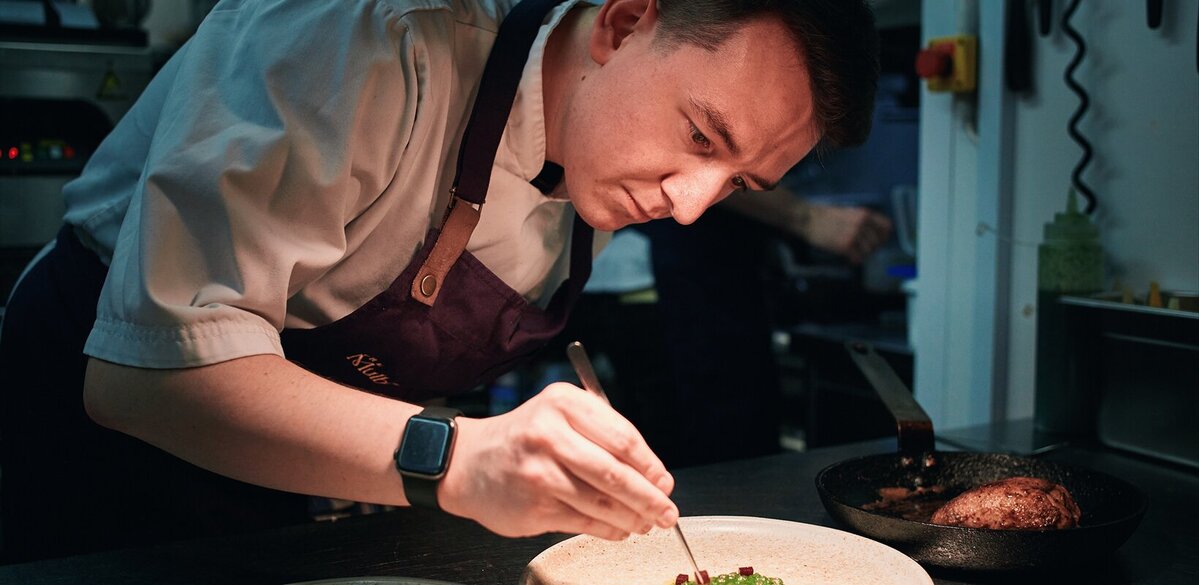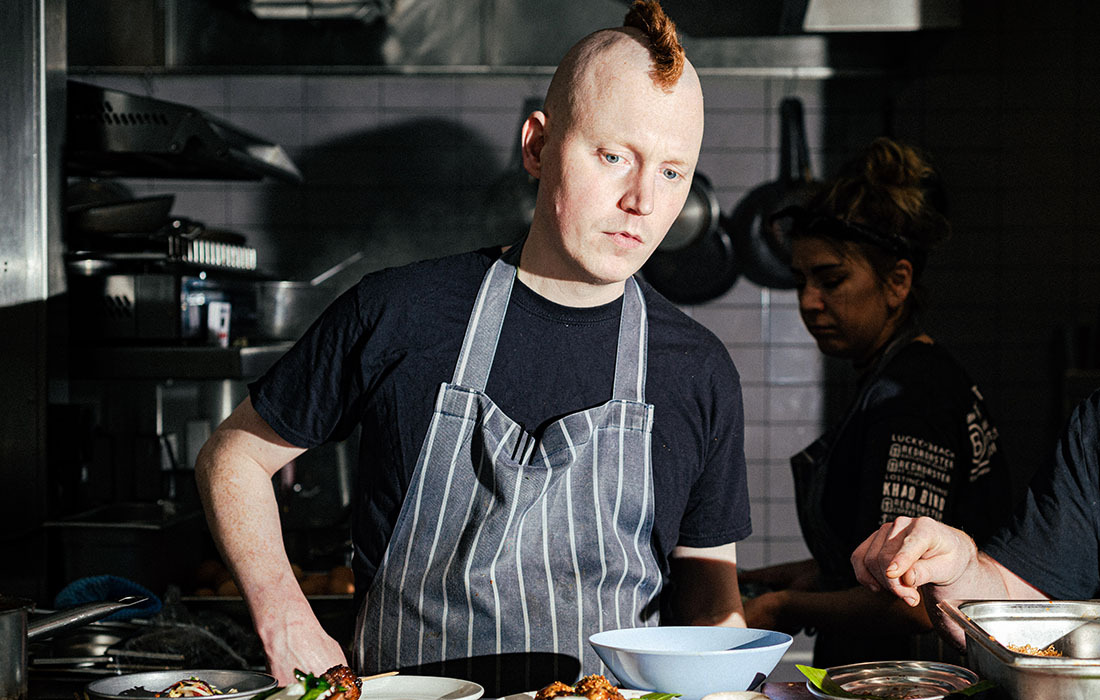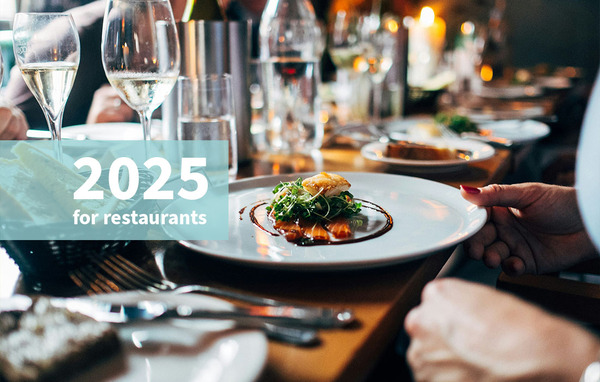Recipe of the week: Lobster and spelt, Fenland celery, caviar and Selim pepper
Recipe for lobster and spelt, Fenland celery, caviar and Selim pepper from Clare Smyth’s cookbook Core
Serves 4
Lobster preparation
- 2 x 450g-500g live native lobsters
Preheat the oven steamer to 90°C. With a large, heavy knife, cut along the natural crease on the lobsters’ heads through the centre of the eyes and straight down to the board. Twist the claws and the tail from the head. Put the claws, tails and heads on a steamer tray and allow to drain.
Cut the lobster heads in half lengthways and remove everything inside. Reserve the heads to make lobster stock and lobster butter. Remove the digestive tube from the tail and discard. Tie the lobster tails together, top to tail, as straight as possible. Cook the lobster tails in the oven steamer for 4 minutes. Remove and chill in an ice bath, then cook the lobster claws in the oven steamer for 7 minutes. Remove and chill in an ice bath. Remove the lobster meat from the shells, keeping the tail and claw meat separate. Dice the claw meat into 5mm cubes and keep the tails whole.
Lobster consommé infusion
- 400g lobster consommé
- 200g puffed buckwheat, toasted
- 5g lapsang souchong tea
Bring the consommé to the boil in a saucepan and remove from the heat. Add the toasted buckwheat and infuse for 2 minutes, then strain. Add the tea and infuse for another 4 minutes, then strain and leave to cool.
Spelt
- 200g pearled spelt
- 50g grapeseed oil
- 100g shallots, brunoised
- 50g white wine
- 500g lobster stock
- Salt, to taste
Place the spelt into a container and cover with water, allowing any spelt husks to float to the surface and be removed, then transfer to a sieve and rinse under cold running water for 5 minutes until the water runs clear.
Heat the oil in a large pan over a medium heat, add the shallots and sweat until soft and translucent. Increase the temperature, add the spelt, and toast for 2-3 minutes until a nutty odour is produced. Add the wine and cook until the alcohol has evaporated, then add 200 g of the lobster stock, season lightly and reduce the heat, allowing the liquid to reduce while stirring continuously.
Add the remaining 300g stock, allow it to reduce until the spelt is tender. The spelt should take 15 minutes to cook. Season to taste and place the cooked spelt on a large tray to cool.
Fenland celery
- 2 Fenland celery sticks, washed, peeled, and cut into 5mm dice
- Salt, to taste
Bring a small saucepan of salted water to the boil and blanch the diced celery until tender. Cool in an ice bath, then drain.
Celtuce disc
- 1 celtuce stick, washed, peeled and cut into slices 5mm thick
- Salt, to taste
Using a 2cm (¾inch) cutter, punch-cut each slice and lightly season. Blanch in a pan of salted boiling water until tender. Cool in an ice bath then drain.
Smoked crème fraîche
- 100g crème fraîche
- 20g maple wood chips
- Salt, to taste
Place the crème fraîche in an airtight container. Fill the smoking gun (food smoker) with the wood chips. Start the machine and light the chips. Insert the pipe into the airtight container and fill with smoke. Seal the lid of the container and leave for 20 minutes. Remove the lid, season to taste and transfer to a squeeze bottle.
Acidulated butter
- 80g onions, cut into slices 4mm thick
- 150g white wine
- 150g white wine vinegar
- 200g unsalted butter, cut into
- 2cm dice
Combine the onions, white wine and vinegar in a medium saucepan over a medium heat and cook until it reduces by three-quarters. Remove from the heat and gradually whisk in the butter until it is thoroughly emulsified. Leave to infuse for 20 minutes, then pass through a fine chinois.
To finish and assemble
- Lobster butter, melted, for brushing
- Lobster stock
- Parmesan, grated
- Ground selim pepper
- 2g chervil, chopped
- Grapeseed oil, for frying
- 15g caviar
- Celery leaves
- Chive tips
- Spring onion rondelles, green and white
- Chervil tips
- Onion flowers
- Baby lettuce leaves
- Salt, to taste
Cut each lobster tail into six slices (three pieces per portion), season and brush with lobster butter. Gently heat under the grill or in an oven just until warm.
Reheat the spelt in a medium saucepan with a dash of lobster stock. Add a piece of acidulated butter, grated Parmesan and selim pepper, then add the chervil and remove from the heat.
Gently heat the diced celery and lobster claws in a pan and season to taste. Heat a dash of grapeseed oil in a non-stick frying pan over a medium heat, and cook the celtuce discs until lightly coloured on both sides. Warm the consommé infusion in a saucepan.
Add the spelt to a crescent-shaped mould. Add the celery and lobster on top. Alternate the lobster and celtuce discs from the top of the crescent to the bottom. Remove the mould.
Add dots of crème fraîche on top, then three domes of caviar. Place the herbs and flowers on top.
Finally, add the consommé infusion to a sauce jug and pour it into the centre of the crescent.



